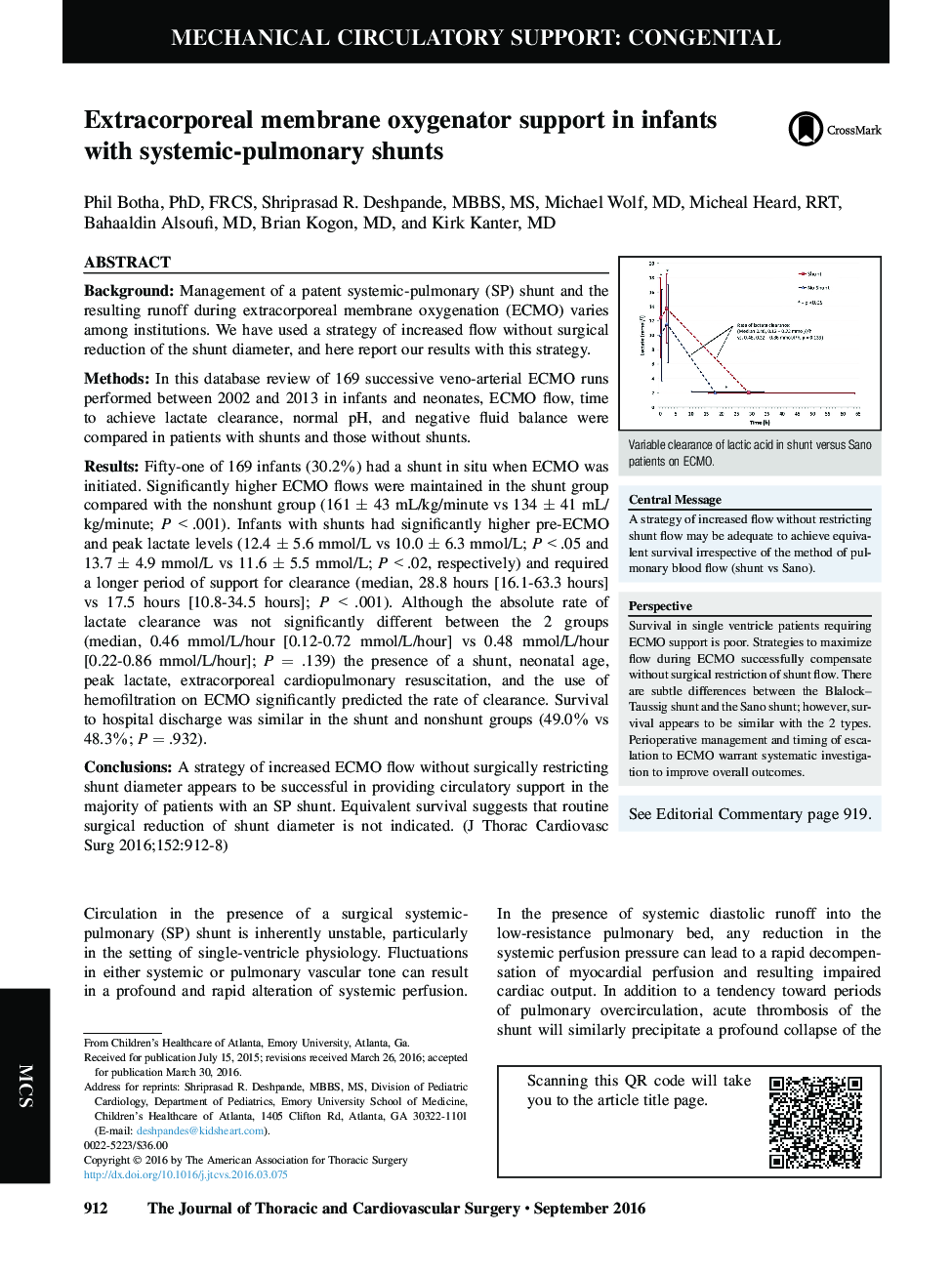| کد مقاله | کد نشریه | سال انتشار | مقاله انگلیسی | نسخه تمام متن |
|---|---|---|---|---|
| 2978793 | 1578582 | 2016 | 7 صفحه PDF | دانلود رایگان |
BackgroundManagement of a patent systemic-pulmonary (SP) shunt and the resulting runoff during extracorporeal membrane oxygenation (ECMO) varies among institutions. We have used a strategy of increased flow without surgical reduction of the shunt diameter, and here report our results with this strategy.MethodsIn this database review of 169 successive veno-arterial ECMO runs performed between 2002 and 2013 in infants and neonates, ECMO flow, time to achieve lactate clearance, normal pH, and negative fluid balance were compared in patients with shunts and those without shunts.ResultsFifty-one of 169 infants (30.2%) had a shunt in situ when ECMO was initiated. Significantly higher ECMO flows were maintained in the shunt group compared with the nonshunt group (161 ± 43 mL/kg/minute vs 134 ± 41 mL/kg/minute; P < .001). Infants with shunts had significantly higher pre-ECMO and peak lactate levels (12.4 ± 5.6 mmol/L vs 10.0 ± 6.3 mmol/L; P < .05 and 13.7 ± 4.9 mmol/L vs 11.6 ± 5.5 mmol/L; P < .02, respectively) and required a longer period of support for clearance (median, 28.8 hours [16.1-63.3 hours] vs 17.5 hours [10.8-34.5 hours]; P < .001). Although the absolute rate of lactate clearance was not significantly different between the 2 groups (median, 0.46 mmol/L/hour [0.12-0.72 mmol/L/hour] vs 0.48 mmol/L/hour [0.22-0.86 mmol/L/hour]; P = .139) the presence of a shunt, neonatal age, peak lactate, extracorporeal cardiopulmonary resuscitation, and the use of hemofiltration on ECMO significantly predicted the rate of clearance. Survival to hospital discharge was similar in the shunt and nonshunt groups (49.0% vs 48.3%; P = .932).ConclusionsA strategy of increased ECMO flow without surgically restricting shunt diameter appears to be successful in providing circulatory support in the majority of patients with an SP shunt. Equivalent survival suggests that routine surgical reduction of shunt diameter is not indicated.
Journal: The Journal of Thoracic and Cardiovascular Surgery - Volume 152, Issue 3, September 2016, Pages 912–918
